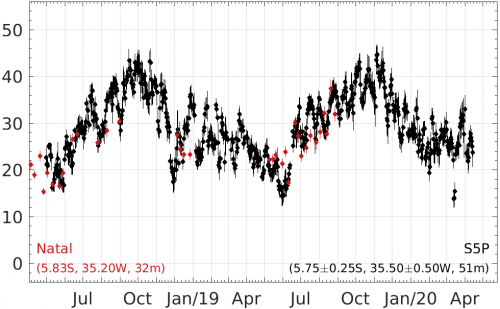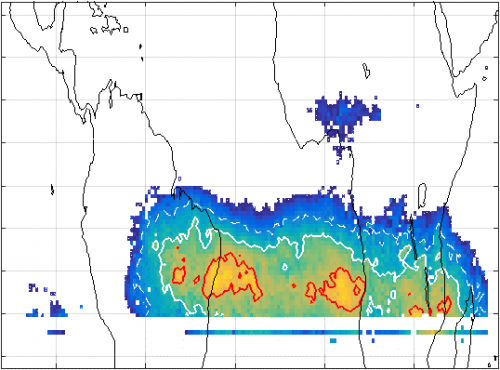Measuring tropospheric ozone is essential, but still challenging
High levels of ozone in the troposphere have detrimental effects on humans and ecosystems, as an air pollutant and climate variable. (Inter)national environmental regulations have therefore been put in place to control ozone and its precursors.
The scientific community regularly assesses the effectiveness of these protocols, hereby relying on accurate, well-characterised measurements at the best possible resolution and covering the global scale over several decades. Meeting these requirements is a true challenge, but needed to fuel progress in understanding the processes controlling ozone in the troposphere.
TROPOMI raises standards
The TROPOspheric Monitoring Instrument, launched into space in 2017 aboard the Copernicus Sentinel-5p satellite, is the European flagship to monitor ozone and its precursors at unequalled resolution. TROPOMI records tropospheric ozone observations daily over the tropical belt.
BIRA-IASB researchers are responsible to validate this (and other) TROPOMI data record(s) and have developed an operational system that evaluates data quality continuously and nearly in real-time. They have recently concluded a comprehensive assessment of the first two years of TROPOMI tropospheric ozone data.
Assessing the quality of TROPOMI data
In-depth comparisons to reference measurements are key in assessments of data quality. BIRA-IASB researchers used correlative data from balloon-borne ozonesondes and from two other satellite sounders to establish that the biases and precision of TROPOMI tropospheric ozone data are better than 15% and 8-13%, respectively.
It was furthermore demonstrated that the high resolution of TROPOMI enables much more detailed studies of geophysical structures and phenomena such as:
- biomass burning effects
- Madden-Julian Oscillation
- Zonal wave-one
TROPOMI indeed offers superior tropospheric ozone data over past and recent satellite sounders, and is acquiring a valuable ozone Climate Data Record.
International scientific assessments of tropospheric ozone
BIRA-IASB researchers are extending their TROPOMI analysis to other satellite data records. They are investigating possible causes of long-standing differences between the data sets, with a particular attention to smoothing and sampling issues. Reconciling the data sets is necessary to progress with the understanding of the spatial distribution and temporal evolution of tropospheric ozone.
In this way, BIRA-IASB is committed to community-wide activities of the Committee on Earth Observation Satellites (CEOS) and of the second Tropospheric Ozone Assessment Report (TOAR-II), which will form the scientific basis for informed amendments to regulations related to air quality and climate change.
References
Hubert, D., Heue, K.-P., Lambert, J.-C., Verhoelst, T., Allaart, M., Compernolle, S., Cullis, P. D., Dehn, A., Félix, C., Johnson, B. J., Keppens, A., Kollonige, D. E., Lerot, C., Loyola, D., Maata, M., Mitro, S., Mohamad, M., Piters, A., Romahn, F., Selkirk, H. B., da Silva, F. R., Stauffer, R. M., Thompson, A. M., Veefkind, J. P., Vömel, H., Witte, J. C., and Zehner, C.: TROPOMI tropospheric ozone column data: Geophysical assessment and comparison to ozonesondes, GOME-2B and OMI, Atmos. Meas. Tech. Discuss., https://doi.org/10.5194/amt-2020-123, in review, 2020.


